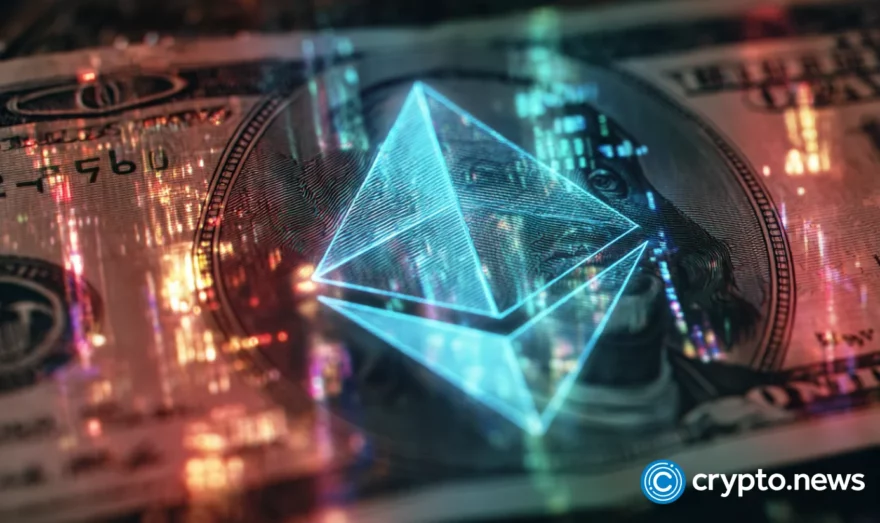What Is Solidity Coding: Ethereum’s Inclusive Development Language

Solidity is the programming language that underpins a new era of financial programming, allowing developers to create their own smart contracts. Behind the infrastructure of many decentralized technologies are tools, such as Solidity, that compose the overall nature of the technology. Programming languages act as a palette of colors needed to paint a portrait, allowing for completely different types of paintings. By using Solidity as a palette, developers can create decentralized applications.
Ethereum’s Solidity language is the basis for a new type of financial programming where you can essentially create your own smart contracts. Smart contracts are Ethereum’s take on decentralized and virtual agreements between different parties. The concept behind the Ethereum vision is to create a new type of ecosystem where parties can communicate with one another through a near-perfectly decentralized method where the middle man is cut out in most cases.
Table of Contents
Smart Contracts and Structure
Prior to understanding what Solidity does and how it can revolutionize the development atmosphere for almost all decentralized systems, it’s important to understand the core concept of smart contracts and what they are built to establish.
In traditional workflows, one usually has a contract that is written to bind multiple parties together in a certain fashion. Let’s say someone has a payment contract written between them and another debt collector that once signed says they’re going to pay him $100. That’s simple enough, right?
The concept behind Ethereum is that one can virtualize that entire process making things more efficient with smart contracts. Simply take the previous example of the debt obligation and virtualize it. One then has immutable and transparent systems where obligations are never subject to fraud or potential miscounting.
Smart contracts are built between two parties, however, the two parties can be a party of 1 signing with a party of 50, and vice versa. Another core concept behind smart contracts is that it opens the door to new opportunities in the financial offerings section. The concept of initial coin offerings (ICOs) was made possible because of the immutability and transparency within smart contracts. With smart contracts you can subsequently issue a native token from the Ethereum standard of ERC20, subsidiaries of the ether asset.
Design and Flow
When designing the basis of Solidity, the Ethereum team wanted to emphasize usability and simplicity. The reasoning for this to enable the toolkit for as wide a range of people as possible. The main claims made by Ethereum state that the concept of Solidity is designed to be close to JavaScript for decentralized applications, otherwise known as dApps.
JavaScript is famous among developers because as an experienced programmer, picking up JavaScript is relatively easy as it encompasses the main concepts and design of modern languages. Similarly, the basis for Solidity was designed to be as similar to existing modern programming outlets as possible. Very limited knowledge of markup languages like HTML may cause a roadblock for those looking to learn Solidity at least at first glance, however, once developers get the hang of it, it’s fairly simple to navigate.
Although technically one can create their own basic programs with Solidity such as high-level loops, calculators, and whatnot, the language was specifically tailored to work for smart contract programming and decentralized application development. This means that a user doesn’t get to extract its real usability until a developer starts applying its usage to smart contract development. If one were to eliminate the smart contract integration, you’re left with a very weak language.
Without getting too in-depth, if readers wanted to create a smart contract called “myContract,” a developer has to establish its instantiation through “contract myContract.” Through this example, one gets the feel for the flow of Solidity. It maintains a lot of design and preprogrammed keywords that will integrate with the Ethereum platform that directly coordinate with the Ethereum Virtual Machine (EVM).
Solidity and Decentralized Applications (dApps)
While those experienced with blockchain and cryptocurrency understand the core of how decentralized systems work, beginners may have a hard time establishing exactly what dApps are and their relation to Solidity.
Decentralized applications are simply applications running off of networks rather than sole systems or users. Think of it like this: When creating an application for Mac, the network that governs the back-end of the application is Apple, or a single entity. When creating a dApp, the network governing all of its processes are those on the Ethereum network, therefore creating a “distributed” system for apps.
Smart contracts are virtualized agreements that establish a direct connection to the Ethereum blockchain. dApps are applications that use smart contracts to connect to the blockchain, making them decentralized. Solidity is simply a tool used to make the connection between a static application and distributed back-end.
Solidity is not a smart contract, and not a dApp, it is a programming language used to create smart contracts that can then subsequently link applications to a blockchain. Upon learning Solidity, a developer can create decentralized applications that interact with blockchains.
Traditional centralized applications maintain connections to singular databases that function in a static, peer-to-database. Decentralized applications are distributed and function in a peer-to-peer (P2P) method for a plethora of reasons. The main advantage is to maintain up-time and limit any potential centralized costs or errors.
Competitors and Roadmap
New versions of Solidity are being established daily, however, this has caused some controversy within the community. Solidity is a new language meaning its still subject to errors and needs a lot more development and refinement prior to it being legitimized entirely. The ease of establishing fragile environments such as Ethereum makes new developers subject to catastrophic errors in their code, which has resulted in a lot of money being lost in created smart contracts.
The main competitors to Ethereum in terms of contracts are in many cases regarded to be the mainstream case of TRON and EOS. However, in terms of the competition to the actual Solidity programming language, there seems to be a finite amount of entities in direct tracks with it. The EOS development kit, for example, offers competitive smart contract creation abilities, however, the contracts are programmed in C++, an already existing language. It may be some time before a natively created programming language overtakes Solidity in terms of internal smart contract development.
FAQs
What is Solidity in Ethereum?
Solidity is an object-oriented programming language designed for implementing smart contracts on Ethereum and other blockchains. It is the main language for developing smart contracts running on the Ethereum Virtual Machine (EVM) or other Ethereum-compatible virtual machines. It supports complex variables and enables developers to build sophisticated decentralized applications.
Why is Solidity important for Ethereum development?
Solidity was built from the ground up to be compatible with the Ethereum network. It’s the easiest programming language to use to write smart contracts for the Ethereum blockchain, so it has spurred a lot of activity and decentralized apps that make Ethereum useful.
Is Solidity the only programming language for Ethereum?
No, Solidity is not the only programming language for developing smart contracts on the Ethereum blockchain. You can use other languages such as Yul, Vyper, Rust, Move, Cairo, etc. However, Solidity is the best to use for the Ethereum blockchain.
How does Solidity relate to smart contracts?
It is a high-level programming language compatible with the Ethereum Virtual Machine (EVM), the computation engine for the Ethereum blockchain. It is the native language for building smart contracts that’ll run on the Ethereum blockchain. To illustrate, French is the official language in France, and German is the official language in Germany. If you visit these countries, you’ll be doing yourself a disservice if you can’t speak their official languages. Similarly, Solidity is the language best understood by the Ethereum ecosystem.
Can I use Solidity to build applications outside of Ethereum?
Yes, a good thing about Solidity is that it isn’t limited to the Ethereum blockchain. You can use it to implement smart contracts on other blockchains, such as Hedera, Binance Smart Chain, Polkadot, Tron, and Avalanche. For example, the Uniswap decentralized exchange was written in Solidity.
Is Solidity similar to other programming languages?
Yes, it is similar to other languages. For instance, Solidity’s syntax is similar to that of Javascript, one of the most popular languages worldwide. It also shares similarities with the likes of Python and C++.
Are there any alternatives to Solidity for Ethereum development?
Yes, there are alternative languages you can use to develop smart contracts for the Ethereum blockchain. You can use Vyper, which is similar to the Python programming language. You can also use Yul, a relatively easy-to-learn language developed by the Ethereum Foundation.
How do I learn Solidity as a beginner?
Weirdly enough, one of the easiest ways to learn how to program in Solidity is by playing CryptoZombies, an interactive learning tool that teaches you how to write smart contracts by building simple games. This tool gives you adequate knowledge on developing decentralized applications using Solidity. You can also use other resources like the Solidity documentation and various online tutorials and courses.
Can Solidity code be updated or modified after deployment?
Smart contracts are immutable, so once you write your code and deploy it, you can’t correct it. However, if you want to correct any identified bugs or add new features, you can destroy the previous smart contract and deploy another one with the updated code.













